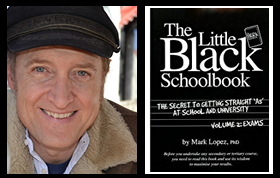Dr Mark’s The Meaning in a Nutshell
Anthony Fabian (director), Anthony Fabian, Helen Crawley, Jessie Keyt and Helena Kriel (screenwriters), Skin (2008)
The film Skin (2008), written by Helen Crawley, Jessie Keyt and Helena Kriel and directed by Anthony Fabian, uses the famous story of Sandra Laing, a ‘coloured’ girl born to white parents in South Africa, to argue the absurdity and injustice of South Africa’s racial segregation laws under the infamous apartheid system, which separated the races to guarantee white supremacy.
Sandra Laing was a problem for the regime because her race could only be ambiguously defined in a system that demanded clarity. She had the appearance of a coloured person (of ‘mixed race’) since she had brown skin, frizzy black hair and the facial features of a black African, but she had white parents, grandparents and great grandparents. She was a rare genetic ‘throwback’ to black ancestors on one or both sides of her family. The film implies that, ideally, this ambiguity should not matter, but shows that it did matter in racist South Africa.
Born in 1955 and growing up in the 1960s during the peak of the apartheid era, Sandra Laing’s racial categorisation mattered enormously in the apartheid system. It would determine your school and educational opportunities, your employment opportunities, where you could dine or socialise, where you could live, with whom you could live, and whom you could marry. She faced being disallowed attendance at the same school as her white brother and risked being disallowed from living with her white parents.
The filmmakers believed that the absurdity and injustice of apartheid was to make race matter so much in this society. The implicit message of the film is that these racial distinctions and racist laws were the cornerstone of a flawed system, and that Sandra Laing should have been allowed to freely find her place in society and her own path to happiness.
Both of Sandra Laing’s parents loved their daughter in different ways, with the film highlighting their different responses to her racial ambiguity and coloured appearance. Sandra’s mother’s response, which is favoured by the filmmakers, shows her as, for the most part, compassionate and accepting of her daughter, making her daughter’s immediate happiness a priority. Her father’s response was to struggle tirelessly to have his daughter reclassified as ‘white’ (after an official panel had reclassified her from ‘white’ to ‘coloured’) knowing that his daughter would have a better life under the ‘white’ category than under any other. But when she was a teenager, her emerging sexuality drew her to the black community where she was more accepted for her appearance. She defied her father by marrying a black African, thereby confronting his deep-seated racism. He wrote her off, severing all communications, a toxic decision that would emotionally damage both of them and irreparably divide the family.
The film depicted Sandra Laing’s experiences with black Africans as, mostly, far more positive that her experiences with whites. Generally, blacks were shown to be more loving and accepting of her. She also found far less prejudice among them. But the film argues that the racism of the whites towards the blacks could make some blacks become racist against whites in response. This is demonstrated in the emergence of racist attitudes in Sandra’s husband towards her when he needed a handy target for his resentment after his home and business were bulldozed because of a ruthless government policy that forced the relocation of the black population in his township to make way for white settlement.
Whites were shown to be judgemental, prejudiced, rude and at times cruelly abusive and violent towards non-whites. They benefited from an overwhelming power imbalance that could produce ruthlessness and insensitivity towards blacks who almost always appear vulnerable in the presence of whites. These unfriendly and unbending attitudes characterised most white officials, business proprietors, and the police, and even corrupted Sandra Laing’s family.
Finally, the film celebrates the demise of apartheid following South Africa’s first all-race election in 1994. Not only does it show Sandra Laing as freed from the burden of racial classification and able to focus on attempting to rebuild damaged relationships with her white family while raising a black family of her own, it shows the attitudes of formerly racially prejudiced white officials and employers softening and becoming more accommodating to people regardless of their race.
Student resources by Dr Mark Lopez
© Mark Lopez 2019 All RIGHTS RESERVED
The purpose of the concise notes of Dr Mark’s The Meaning in a Nutshell is to provide much needed help to students seeking to unlock the meaning of the texts with which they have to deal. (More elaborate notes are provided in lessons as part of my private tutoring business.)
Subject: Skin meaning, Skin themes, Skin analysis, Skin notes
